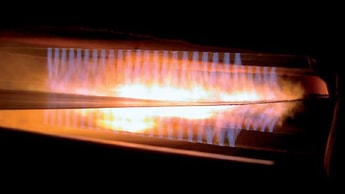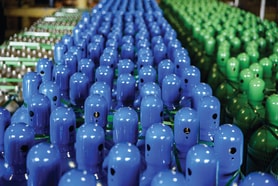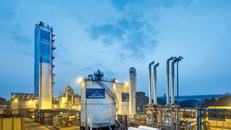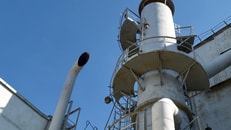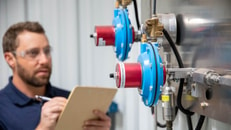Oxyfuel Technology in the Metallurgical and Glass Industries
OXYFUEL COMBUSTION IN THE STEEL AND METALS INDUSTRY
The most frequent use of oxyfuel combustion in the steel and metals industries is to enhance the melting process in electric arc and rotary furnace processes. Here, conventional oxyfuel provides substantially raised flame temperature — and the higher the flame temperature, the faster the scrap melting.
For melting and heating furnace operations, use of oxyfuel leads to a higher melt or heating rate, fuel savings, and lower CO2 emissions.
When firing an air-fuel burner, a significant amount of fuel energy is used to heat up the nitrogen from the combustion air: 8 molecules of N2 per molecule of CH4. The hot nitrogen leaves through the stack, creating energy losses. Avoiding the nitrogen ballast by using industrial grade oxygen, makes both the combustion and the heat transfer more efficient.
Increasing demands on the steel and metal industries and new market challenges have called for continuous development work in oxyfuel technology, and two of the most interesting and successful technologies are flameless combustion and direct flame impingement (DFI).
... to continue reading you must be subscribed


